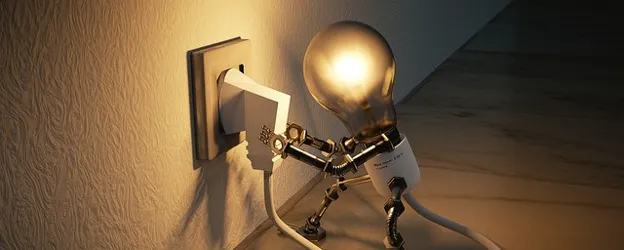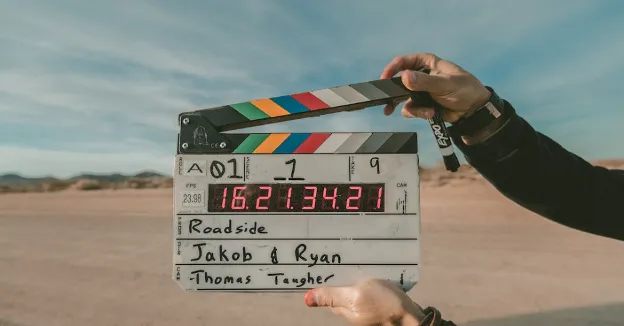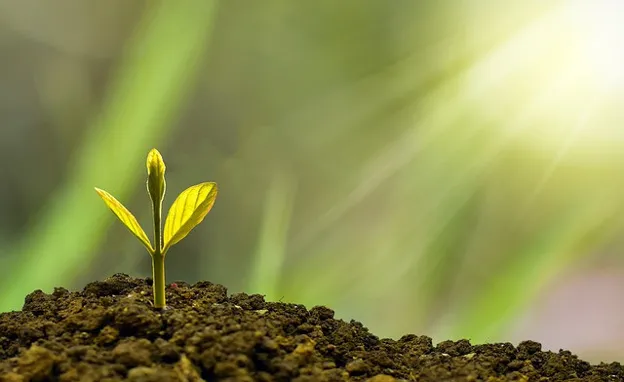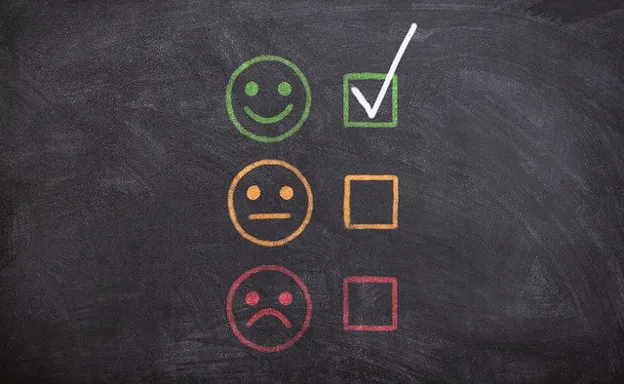How to Create Your Sales Funnel

-
Understanding Sales Funnels
-
The Power of a Well-Defined Sales Funnel
-
Understanding the Different Stages of a Sales Funnel
- Stage 1: Awareness
- Stage 2: Interest
- Stage 3: Decision
- Stage 4: Action
-
Customer Retention: The Often-Overlooked Aspect of Sales Funnels
-
Post-Purchase: Cultivating the Relationship
-
Upselling and Cross-selling: The Art of the Deal
-
Ask for Feedback: Show Them You Care
-
Final Funnel Thoughts
Disclosure: Some of the links in this article may be affiliate links, which can provide compensation to me at no cost to you if you decide to purchase. This site is not intended to provide financial advice and is for entertainment only.
Understanding Sales Funnels
Hello there, online entrepreneurs! Have you ever found yourself pondering, “how do I turn these random website visits into serious sales?” Trust me, we've all been there! You need to guide these potential customers on a journey, and that's where a well-crafted sales funnel comes in. Yes, you heard me right, a 'sales funnel,' and it's every bit as powerful as it sounds.
Sales funnels are a game-changer, and if you’re not already on the bandwagon, it’s high time you hopped on. They represent the ultimate tool in converting casual visitors into committed customers. But before we dive into the 'how,' let’s take a moment to understand the 'what.'
Simply put, a sales funnel is a strategic process that businesses employ to lead prospective customers from the first point of contact (awareness) through a series of marketing steps, ending in a purchase (conversion). Think of it like a real funnel, wide at the top, narrow at the bottom. You start with a large audience and gradually narrow down to those who are willing to spend their hard-earned cash on your product or service.
The Power of a Well-Defined Sales Funnel
Remember the time when you were just browsing online for a new pair of sneakers? You clicked on an ad, then before you knew it, you were on a website browsing different shoe styles. You then found yourself entering your card details and making a purchase. That right there is a sales funnel in action!
Whether you're an e-commerce store owner, a blogger, or an online coach, you can utilize the power of a sales funnel. They help you understand your customers better, improve your marketing strategies, and, most importantly, increase your sales.
Now, let’s roll up our sleeves and get down to the business of creating your very own sales funnel, and let me tell you from my personal experience, platforms like ClickFunnels can make this journey a lot smoother. Let's dig into this next!
Understanding the Different Stages of a Sales Funnel
The first time I heard about the stages of a sales funnel, I remember feeling a bit like I'd stumbled upon the "secret sauce" of successful selling. I was sitting in a tiny, overpriced coffee shop with a mentor of mine who had weathered the ups and downs of entrepreneurship. Between sips of lukewarm latte, he laid out the concept like it was the most exciting story he'd ever told.
Stage 1: Awareness
"Think of it like an epic adventure," he said. "Your potential customer is the hero, starting off on their journey at the wide top of the funnel, the Awareness stage. This is where they first hear the whispers of your brand, catch sight of your logo in an ad, or stumble upon one of your social media posts. Just like how I came across that funny cat video and ended up discovering an amazing pet supply store!"
Stage 2: Interest
From there, he explained, our hero moves into the Interest stage. They've noticed you, they're intrigued, and now you've got to keep them interested. "It's like a movie trailer," he said, "you need to give them enough to make them want more, but not too much that they feel they've seen it all." In my own business, this looked like sharing helpful blog posts, crafting engaging email newsletters, and getting creative with interactive content. ClickFunnels was particularly useful here for building enticing landing pages that nurtured curiosity.
Stage 3: Decision
He then compared the Decision stage to a suspenseful cliffhanger. The hero is standing at the edge, ready to take the leap, and it's your job to convince them it's worth it. "Throw in a good deal, a time-limited offer, a bonus gift, anything that can help them take the plunge," he advised. I'll always remember the first time I offered a flash sale in my online store - the response was incredible.
Stage 4: Action
Finally, he said, we reach the Action stage - the climax of our story. This is where the customer makes their purchase, but the story doesn't end there. I remember his words very clearly: "Getting them to the bottom of the funnel is a win, but your job is not over. Now, you have to keep them coming back for sequels."
Ever since that day, the way I've approached sales has changed dramatically. With a good understanding of these stages, the right tools (ClickFunnels has been a game-changer), and some trial and error, the sales funnel has become less of a mystery and more of a strategy. And believe me, once you've got it figured out, it's an adventure like no other.
But here's a secret - just getting a customer to the action stage isn’t the end. Not by a long shot. This is where most people get it wrong. So, let’s talk about how to retain these hard-earned customers in the next section. Buckle up!
Customer Retention: The Often-Overlooked Aspect of Sales Funnels
Okay, so we've got customers buying from us - hooray! But let's not stop there. It's time to shift our focus from acquisition to retention. This might surprise you, but studies show it costs 5 times more to attract a new customer than to keep an existing one. Believe me, I’ve learned this the hard way. But how do you maintain customer relationships? That’s where the post-purchase stage of the sales funnel comes in.
Post-Purchase: Cultivating the Relationship
Ah, the post-purchase phase. Let me tell you a story, which not only underlines the importance of this stage but also shows why it's so close to my heart.
Not too long after I had established one of my businesses, I noticed a peculiar trend. I was getting a good number of customers and my products were being received well. But I wasn't seeing the repeat business that I'd hoped for. It was as if my customers were coming for a single visit and then disappearing into thin air, leaving me with the feeling of a one-hit-wonder band.
That's when a seasoned entrepreneur friend of mine stepped in with some sound advice. "The sale," he told me, "is just the beginning of your relationship with the customer, not the end." He explained that even after customers have made a purchase, they need to feel valued and important. This understanding shifted my whole perspective. I started to implement post-purchase follow-up emails, thanking customers for their purchases, providing helpful information about the products, and even throwing in a few discounts for their next visit.
ClickFunnels came to the rescue again here, helping me streamline this process and making it easy to engage my customers post-purchase. The results? Astounding. Not only did I see an uptick in repeat business, but customer feedback also improved. I learned that customers appreciated the effort to connect with them, even after the money had exchanged hands.
The post-purchase stage, as I learned the hard way, isn't just about ensuring your customer doesn't experience buyer's remorse. It's about cultivating the relationship further and turning one-time buyers into loyal, repeat customers. It's about showing your customers that you care about their experience, not just their wallet. And, trust me, the effort you put in here will pay off exponentially in the long run.
Upselling and Cross-selling: The Art of the Deal
Back in the early days I had one focus: get the product sold. However, I quickly learned that simply selling a product or service was not the end of the journey. The real opportunity was in the art of upselling and cross-selling, and how it can drastically increase your profit margins and customer satisfaction.
I'll admit it, I had some reservations at first. "Won't customers be put off if I'm trying to sell them more?" I thought. But I decided to give it a shot. I started offering my customers complimentary products and services at the point of sale. Say a customer was buying a fitness guide from my online store. I'd pop in a suggestion for a set of resistance bands or a diet plan—items that would complement their initial purchase and enhance their fitness journey.
Lo and behold, not only did my revenue increase, but customer satisfaction also shot up! Customers were appreciating the fact that I was suggesting items that could genuinely help them. It was a win-win situation. This is where a tool like ClickFunnels can come in handy. It allows you to set up these upsells and cross-sells without any technical knowledge, making it easier for you to reap the benefits.
Here's the takeaway: Don't stop at the initial sale. There's a whole world of possibilities after that, possibilities that can lead to more profit and happier customers. Upselling and cross-selling aren't just sales tactics; they're ways of adding value to your customer's experience. So don't shy away from them—embrace them! Your bottom line will thank you for it.
Ask for Feedback: Show Them You Care
I used to shy away from customer feedback. I mean, who really likes criticism, right? But soon, I realized that my reluctance was causing me to miss out on a goldmine of insights. And trust me, these insights are the difference between a company that plateaus and a company that grows.
It all started when I decided to bite the bullet and ask my customers what they thought about the products they purchased. I was a bundle of nerves waiting for their responses. But when they started trickling in, I was amazed. There were so many things I had overlooked! There were suggestions on how to improve the product, ideas for new features, and even compliments that boosted my morale.
So, I started implementing their suggestions and observed the changes. The products were better, the sales were higher, and my customers were happier. All because I dared to ask for their opinion.
But here's the thing about asking for feedback—it's not just about making your product better. It's about showing your customers that you value their opinion. That you're not just here to sell them something, but you genuinely care about their experience. And ClickFunnels makes it so easy to gather this feedback with features like survey funnels and follow-up emails.
The point I'm trying to make here is this: don't fear feedback. Embrace it. Show your customers that you care about their opinion. Not only will this lead to better products, but it will also cultivate a relationship of trust and loyalty with your customers. And in today's highly competitive market, that is worth its weight in gold.
Final Funnel Thoughts
Creating a sales funnel can seem daunting at first, but I assure you, it’s not as scary as it sounds. Especially when you’ve got great tools like ClickFunnels at your disposal. So why not take the plunge and start building your own sales funnel? Trust me; your future self will thank you.
And there you have it – the secret sauce to creating a successful sales funnel! Whether you're a beginner or a seasoned marketer, I hope my personal insights and experiences were helpful. Now, it's time to go forth and convert!
-
Understanding Sales Funnels
-
The Power of a Well-Defined Sales Funnel
-
Understanding the Different Stages of a Sales Funnel
- Stage 1: Awareness
- Stage 2: Interest
- Stage 3: Decision
- Stage 4: Action
-
Customer Retention: The Often-Overlooked Aspect of Sales Funnels
-
Post-Purchase: Cultivating the Relationship
-
Upselling and Cross-selling: The Art of the Deal
-
Ask for Feedback: Show Them You Care
-
Final Funnel Thoughts
Disclosure: Some of the links in this article may be affiliate links, which can provide compensation to me at no cost to you if you decide to purchase. This site is not intended to provide financial advice and is for entertainment only.




